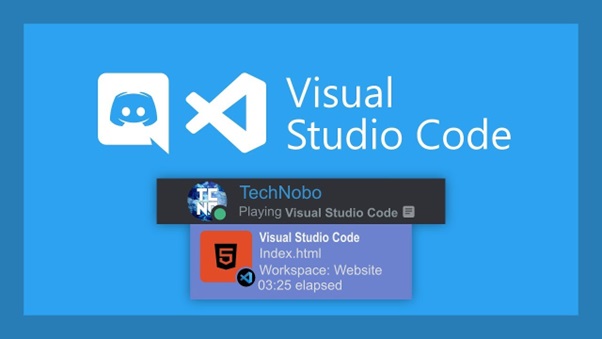Unleash the Power of Electron: An In-Depth Guide to Developing Cross-Platform Applications
It's crucial to create robust and versatile applications that effortlessly run on multiple platforms. This is where Electron, a formidable framework, comes into play. Let's delve into the realm of Electron and delve into its features, advantages, popular applications, as well as the Electron app development process.
Exploring Electron's Essence
At its core, Electron stands as an open-source framework which allows developers to create multi-platform desktop apps via web-based technologies such as HTML, CSS, and JavaScript. By utilizing Electron, developers can build applications for a range of operating systems, including Windows, macOS, and Linux, ensuring widespread compatibility and accessibility.
Electron vs. Other Frameworks: Unleashing the Perks
When contrasting Electron with different frameworks, the following benefits stand out:
- Utilizing Native Capabilities: Unlike web-based apps, Electron takes advantage of Chromium and Node.js strength to grant access to native system APIs. This makes it possible for developers to make software that integrates neatly with the host operating system.
- Code Reusability: Electron makes it easier to use pre-existing knowledge and code bases for web development. Because code can be reused between platforms with little change, this simplifies development efforts.
- Cross-Platform Compatibility: Electron programs run smoothly on a variety of operating systems, negating the need for separate platform-specific development processes.
- Wide-ranging Extensibility: Electron has a wide range of libraries, extensions, and plugins available. Developers may use this enormous resource pool to add new features to their apps, from UI components to network and database connectivity.
A Noteworthy Electron App

Several renowned applications have been brought to life using Electron, showcasing its versatility and capabilities:
- Visual Studio Code: Microsoft's highly popular code editor delivers a seamless editing experience across platforms, courtesy of Electron.
- Slack: This widely-used communication platform leverages Electron to provide a unified desktop application experience.
- Discord: Geared towards gamers, this chat platform harnesses Electron to deliver an immersive multimedia experience to gamers worldwide.
The Pros and Cons of Electron Apps
A variety of benefits that an electron app provides make it an appealing option for developers. But it's important to take potential disadvantages into account. Let's explore the benefits and drawbacks of an Electron app in more detail:
Advantages:
- Cross-Platform Consistency: Electron gives developers the tools they need to create programs that run smoothly on several platforms, including Windows, macOS, and Linux. This cross-platform portability saves a lot of resources and development time.
- Rapid Development: Electron streamlines and speeds up the development process by utilizing web technologies like HTML, CSS, and JavaScript. By utilizing their current web development knowledge and codebases, developers may shorten the learning curve and facilitate quicker iterations.
- Native Integration: Electron makes it easier to use native system APIs, enabling close operating system integration. This gives developers the ability to produce software with native app-like capabilities including file system access, alerts, and system tray integration.
- Wide-ranging Ecosystem: Electron has a robust ecosystem that is packed with libraries, plugins, and extensions. Developers may use this wealth of resources to add new functionality to their applications, including user interface elements, tools for visualizing data, and network and database connectivity.
- Community Support: Developers from a large and vibrant community actively support Electron's development and contribute to its progress. This thriving community provides tools, tutorials, and forums where developers can connect, exchange information, and work together.
Disadvantages:
Performance considerations: Electron programs might need a lot of resources.
compared to their native counterparts, more system resources. Chromium with Node.js can reduce speed and increase memory utilization, especially in apps that require a lot of resources. It is crucial to practice careful optimization and effective resource management to address these performance issues.
- Bundle Size: Electron apps often have bigger file sizes compared to native apps since Chromium and Node.js are included. Longer download and installation times can thus be an issue, particularly for those with little bandwidth or storage space.
- Limited Support for Mobile Platforms: Electron focuses largely on desktop apps and has limited support for mobile operating systems like iOS and Android. Native development could be more appropriate for apps that are mobile-focused, notwithstanding the experimental initiatives Capacitor and Cordova Electron's goal to close this gap.
- Dependency on External Frameworks: Electron is dependent on external frameworks like Chromium and Node.js, which add more dependencies and possible security holes. A secure program must be maintained by constantly evaluating dependencies and applying security fixes.
- User Experience Challenges: With Electron, it might be difficult to provide a genuinely native user experience across many operating systems. To guarantee a consistent and simple user experience, platform-specific quirks, design principles, and behaviors could need extra work.
While the advantages of an Electron app are substantial, it's vital to consider the potential drawbacks and carefully assess whether Electron aligns with your specific application requirements. By comprehending these advantages and disadvantages, developers can make informed decisions and overcome challenges during Electron app development.
Key Considerations in Electron App Development
To ensure a successful Electron app development journey, several crucial aspects merit attention:
- User Experience: Prioritize creating an intuitive and responsive user interface that adheres to platform-specific design guidelines.
- Performance Optimization: Pay meticulous attention to resource management and identify potential bottlenecks to deliver a seamless and efficient user experience.
- Security: Implement robust security measures to safeguard user data and preempt vulnerabilities.
- Update and Maintenance: Plan regular updates and maintenance activities to address bugs, security patches, and feature enhancements.
Mitigating Risks in Electron Development
While Electron presents immense potential, it's vital to be cognizant of potential risks:
- Resource Consumption: Electron apps can be resource-intensive, necessitating optimized code and efficient resource management to mitigate performance issues.
- Security Vulnerabilities: Stay abreast of security best practices and proactively address potential vulnerabilities to safeguard user data.
- Compatibility: Stay vigilant regarding Electron updates and test compatibility across various operating systems to ensure a consistent user experience.
Development Guide: Constructing Your Electron App
To embark on your Electron app development journey, follow these steps:
- Set up your development environment by installing Node.js and the Electron framework.
- Design your application's user interface using web technologies (HTML, CSS, and JavaScript).
- Leverage the Electron API to implement native functionalities and seamless system integrations.
- Conduct comprehensive testing of your application across multiple platforms and resolve any compatibility or performance issues.
- Package your Electron application for distribution using tools like Electron Forge or Electron Packager.
- Distribute your application to users and plan for regular updates and maintenance.
Conclusion
Electron has revolutionized cross-platform application development, empowering developers to create robust and versatile desktop applications using familiar web technologies. By understanding its advantages, exploring popular applications, considering key development factors, and mitigating risks, you can harness the power of Electron and deliver exceptional user experiences across multiple platforms. So, embark on your Electron development journey and unlock endless possibilities in the world of desktop applications!

